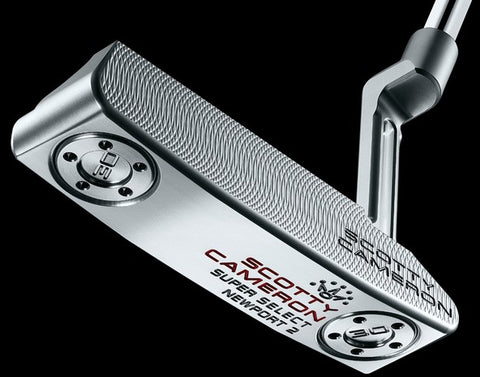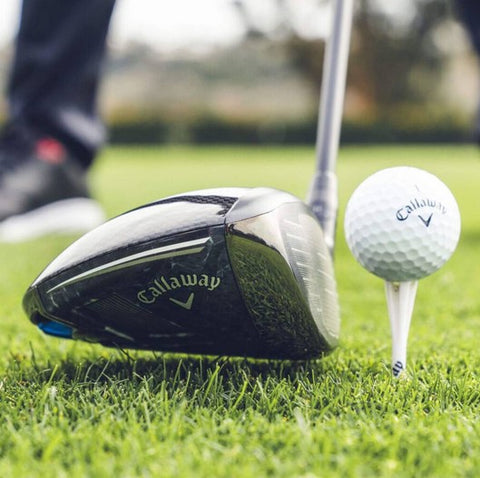When it comes to mastering the greens, a Scotty Cameron putter is a game-changer, blending cutting-edge design with the precision required for consistent putting performance. At Golf 360, New Zealand’s go-to retailer for golf accessories, clubs, and apparel, we know that choosing the right putter is essential to building confidence on the green. Here’s a guide to help you choose the best Scotty Cameron putter to complement your putting style and technique.
1. Shape: Finding the Right Fit for Your Stroke
Choosing a putter shape is often a matter of personal preference, but certain shapes work better with specific types of putting strokes. For players with a technical, alignment-focused stroke, square putter shapes and mechanical necks provide the stability and structure needed to line up each shot. On the other hand, golfers who prefer a more fluid stroke may benefit from softer, rounder putter designs with flowing necks, which encourage a natural arc.
No matter your preference, every Scotty Cameron putter is precision-milled in the USA to meet exacting Tour-validated specifications. This ensures that face, sole, and neck dimensions remain consistent, providing the same feel and performance to all players who choose a Scotty Cameron putter.
2. Path: Understanding the Natural Arcing Stroke
It’s a common misconception that a putter swings vertically back and forth along the target line, like a pendulum. Due to the lie angle of the putter, the stroke actually moves along a subtle arc: slightly inside the target line on the backswing, square at impact, and inside the target line again on the follow-through. A putter with the right length and toe flow supports this arcing path, aligning with the natural movement of your stroke.
When selecting a Scotty Cameron putter, aim to find a length that allows your eyes to sit just inside the target line. This position helps maintain good posture and ensures that your stroke follows the proper arcing path.
3. Toe Flow: Achieving Consistent Face Control
The concept of toe flow is essential to the putter’s ability to move naturally along the proper arc. Depending on how and where the neck of the putter connects to the head, the putter will have varying degrees of toe flow, influencing how the putter head rotates through the stroke. Golfers who need more toe flow will find putters with shorter necks or shaft bends more suited to their game, as these designs allow for increased movement.
Test putters with different toe flows to see which one aligns with your stroke style. A simple way to test this is by hitting straight putts from 20 feet. See which putter allows you to keep the face square at impact without manipulating the putter with your hands.
4. Length: Setting the Ideal Eye Position
Putter length is crucial, as it affects your posture and eye position over the ball. A putter that’s too long positions your eyes too far inside the target line, while a shorter putter can make you hunch over, moving your eyes outside the target line.
The ideal putter length will set your eyes just 1-2 inches inside the target line, enabling you to maintain proper balance and an arcing stroke.
5. Necks: Matching the Neck Design to Your Stroke
The neck design of a putter affects its performance and the amount of toe flow it provides. Shorter necks and more extreme shaft bends increase toe flow, allowing for a more arcing stroke, while longer necks or less pronounced bends reduce toe flow, which supports a straighter path. Face-balanced putters, which have their shaft axis closer to the centre, offer stability for golfers seeking a more mechanical stroke. Scotty Cameron offers a variety of neck designs to suit both arcing and straight strokes.
6. Grips: Finding the Right Feel and Fit
Grip size and style also play a role in your putting stroke. Smaller grips encourage a more flowing stroke and are ideal for putters with higher toe flow, while larger grips support a square-to-square stroke and are best suited to face-balanced putters. Choose a grip that feels comfortable in your hands and complements the design and balance of your Scotty Cameron putter.
7. Loft and Lie: Achieving the Perfect Roll
The loft of a putter influences how the ball launches off the face and rolls across the green. Scotty Cameron putters are generally designed with a loft of 3.5° to lift the ball out of its indentation on the grass, ensuring a smooth roll. Additionally, the lie angle should be suited to the proper length, so if you’ve selected the correct putter length, the standard lie angle should work well for most golfers.
8. Weight: Fine-Tuning Balance and Feel
Scotty Cameron putters come with a standard weight configuration that balances performance and feel. However, if you have a slower stroke or if your hands tend to be too active, a heavier head or a Dual Balance putter may help stabilize your stroke and provide better control.
Choosing Your Scotty Cameron Putter
At Golf 360, we’re here to help you find the perfect Scotty Cameron putter for your game. Whether you prefer a face-balanced model for a mechanical stroke or a high-toe-flow design for a natural arc, the right putter can make all the difference in your confidence and performance on the green.




